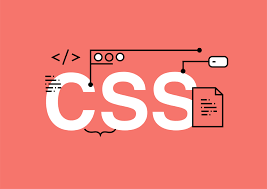Advanced CSS Topics
CSS Variables (Custom Properties):
Learn how to define reusable values with --property syntax.
Example:
:root {
--main-color: #3498db;
--font-size: 16px;
}
h1 {
color: var(--main-color);
font-size: var(--font-size);
}
CSS Grid Layout:
Master grid-based design for powerful 2D layouts.
Key properties like grid-template-rows, grid-template-columns, and grid-gap.
Example:
.container {
display: grid;
grid-template-columns: 1fr 2fr;
grid-gap: 10px;
}
Flexbox (Advanced Techniques):
Dive deeper into align-content, order, and nested flex containers.
CSS Pseudo-Elements and Advanced Selectors:
Explore selectors like :nth-child, :not(), and their combinations.
Example:
li:nth-child(odd) { background-color: #f4f4f4; }
div:not(.active) { opacity: 0.5; }
Media Query Breakpoints for Responsive Design:
Best practices for using breakpoints.
Example:
@media (max-width: 768px) {
body { font-size: 14px; }
}
CSS Animations:
Create smooth transitions with @keyframes and animation properties.
Example:
@keyframes slideIn {
from { transform: translateX(-100%); }
to { transform: translateX(0); }
}
.box {
animation: slideIn 1s ease-in-out;
}
CSS Transitions (Advanced Use Cases):
Chain transitions and add delays.
Example:
button:hover {
background-color: #3498db;
transition: background-color 0.3s ease;
}
CSS Transformations:
Apply rotate, scale, skew, and combinations.
Example:
.card:hover {
transform: scale(1.1) rotate(5deg);
}
CSS Frameworks (Tailwind, Bootstrap, etc.):
Overview of when and how to use frameworks for rapid development.
CSS for Accessibility:
Styling focus states, ARIA roles, and ensuring contrast ratios.
Example:
a:focus { outline: 2px dashed #3498db; }
CSS for Dark Mode:
Leveraging @media (prefers-color-scheme) for dark mode.
Example:
@media (prefers-color-scheme: dark) {
body { background-color: #121212; color: #fff; }
}
CSS Counters:
Dynamically number elements using counter-reset and counter-increment.
Example:
ol { counter-reset: section; }
li::before { content: counter(section) ". "; counter-increment: section; }
CSS Shape and Clipping:
Use clip-path and shapes for creative layouts.
Example:
.circle {
clip-path: circle(50%);
}
CSS Masking and Blending Modes:
Experiment with mask-image and mix-blend-mode.
Example:
.image {
mask-image: url(mask.png);
mix-blend-mode: multiply;
}
CSS Scroll-Snapping:
Smooth scrolling with scroll-snap-type and scroll-snap-align.
Example:
.container {
scroll-snap-type: x mandatory;
}
.item {
scroll-snap-align: center;
}
CSS Logical Properties:
Use logical properties for multi-directional layouts (margin-inline, padding-block).
CSS Houdini:
Explore custom CSS properties and browser painting APIs.
CSS Performance Optimization:
Tips for reducing reflows, using GPU acceleration, and minimizing CSS size.
CSS Debugging Tools and Techniques:
Leverage browser DevTools for identifying and fixing layout issues.
Future of CSS:
Preview new features like @container queries, subgrid, and experimental specifications.


Nova